A Constitutive Model of High-Early-Strength Cement with Perlite Powder as a Thermal-Insulating Material Confined by Caron Fiber Reinforced Plastics at Elevated Temperatures
Abstract
:1. Introduction
2. Materials and Test Program
2.1. Materials
2.2. Testing Program
3. Constitutive Model of the CFRP-Confined Thermal-Insulating Material
3.1. Compressive Strength Test of SPCs
3.2. Compression Test on CFRP-Confined Specimens
3.2.1. HESC Specimens
3.2.2. HESC with Perlite Content
3.3. Constitutive Model for CFRP-Confined Thermal-Insulating Material
3.3.1. Compressive Stress–Strain Relationship of the Constitutive Model
3.3.2. The Axial Strain at the Maximum Compressive Strength
4. Constitutive Model of the Thermal-Insulating Material at Elevated Temperature
4.1. Compression Test at Elevated Temperature Conditions
4.2. A Maximum Compressive Strength Model at Elevated Temperatures
5. Constitutive Model of CFRP-Confined Thermal-Insulating Material at Elevated Temperatures
6. Conclusions
- Based on the compressive test results, the maximum compressive strength of HESC diminished with the increment in the addition of perlite, and also decreased with elevating temperature.
- From the compressive test results, the maximum compressive strength of the thermal-insulating material confined by CFRP was enhanced with an increment in the number of CFRP layers used.
- For the maximum compressive strength prediction model, the average absolute error between the analytical model and the experimental maximum compressive strengths was 7.24%, and its correlation coefficient (R2) is 0.903.
- For the proposed thermal softening model of the thermal-insulation specimens at elevated temperature, the average absolute errors between the analytical and experimental maximum compressive strengths errors were 5.12%, 3.13%, 3.49%, and 2.63% for perlite ratios of 0, 10, 20, and 30 wt.%, respectively. The correlation coefficients (R2) between the analytical and experimental maximum compressive strengths errors were 0.95, 0.98, 0.98, and 0.98 for perlite ratios of 0, 10, 20, and 30 wt.%, respectively.
- The physics-based constitutive model for inorganic thermal-insulating material confined by CFRP exposed at a surrounding elevated temperature was proposed, and this proposed constitutive model can predict the experimental maximum compressive strength for the thermal-insulating material confined by CFRP composite materials accompanied with increasing temperature.
Author Contributions
Funding
Conflicts of Interest
References
- Li, Y.F.; Yang, T.H.; Tsai, T.H. A novel strengthening method for damaged pipeline under high temperature using inorganic insulation material and carbon fiber reinforced plastic composite material. Materials 2019, 12, 3484. [Google Scholar] [CrossRef] [PubMed] [Green Version]
- Bakis, C.E.; Bank, L.C.; Brown, V.L.; Cosenza, E.; Davalos, J.F.; Lesko, J.J.; Machida, A.; Rizkalla, S.H.; Triantafillou, T.C. Fiber-reinforced polymer composites for construction—State-of-the-art review. J. Compos. Constr. 2002, 6, 73–87. [Google Scholar] [CrossRef] [Green Version]
- Hollaway, L.C. A review of the present and future utilization of FRP composites in the civil infrastructure with reference to their important in-service properties. Constr. Build. Mater. 2010, 24, 2419–2445. [Google Scholar] [CrossRef]
- Topçu, I.B.; Işıkdağ, B. Manufacture of high heat conductivity resistant clay bricks containing perlite. Build. Environ. 2016, 42, 3540–3546. [Google Scholar] [CrossRef]
- Topçu, I.B.; Işıkdağ, B. Effect of expanded perlite aggregate on the properties of lightweight concrete. J. Mater. Process. Technol. 2008, 204, 34–38. [Google Scholar] [CrossRef]
- Demirboğa, R.; Örüng, İ.; Gül, R. Effect of expanded perlite aggregate and mineral admixtures on the compressive strength of low-density concretes. Cem. Concr. Res. 2001, 31, 1627–1632. [Google Scholar] [CrossRef]
- Ramezanianpour, A.A.; Karein, S.M.M.; Vosoughi, P.; Pilvar, A.; Isapour, S.; Moodi, F. Effects of calcined perlite powder as a SCM on the strength and permeability of concrete. Constr. Build. Mater. 2014, 66, 222–228. [Google Scholar] [CrossRef]
- Tasdemir, C.; Sengul, O.; Tasdemir, M.A. A Comparative study on the thermal conductivities and mechanical properties of lightweight concretes. Energy Build. 2017, 151, 469–475. [Google Scholar] [CrossRef]
- Sengul, O.; Azizi, S.; Karaosmanoglu, F.; Tasdemir, M.A. Effect of expanded perlite on the mechanical properties and thermal conductivity of lightweight concrete. Energy Build. 2011, 43, 671–676. [Google Scholar] [CrossRef]
- Huang, Z.; Liew, J.Y.R.; Li, W. Evaluation of compressive behavior of ultra-lightweight cement composite after high temperature exposure. Constr. Build. Mater. 2017, 148, 579–589. [Google Scholar] [CrossRef]
- Li, Y.F.; Lin, C.T.; Sung, Y.Y. A constitutive model for concrete confined with carbon fiber reinforced plastics. Mech. Mater. 2003, 35, 603–619. [Google Scholar] [CrossRef]
- Hoshikuma, J.; Kawashima, K.; Nagaya, K.; Taylor, A.W. Stress-strain model for confined concrete in bridge piers. J. Struct. Eng. ASCE 1997, 123, 624–633. [Google Scholar] [CrossRef]
- Kent, D.C.; Park, R. Flexural members with confined concrete. J. Struct. Div. ASCE 1971, 97, 1969–1990. [Google Scholar]
- Sheikh, S.A. A Comparative study of confinement models. ACI J. 1982, 79, 296–305. [Google Scholar]
- Mander, J.B.; Priestley, M.J.N.; Park, R. Theoretical stress-strain model for confined concrete. J. Struct. Div. ASCE 1988, 114, 1804–1826. [Google Scholar] [CrossRef] [Green Version]
- Mander, J.B.; Priestley, M.J.N.; Park, R. Observed stress-strain behavior of confined concrete. J. Struct. Div. ASCE 1988, 114, 1969–1990. [Google Scholar] [CrossRef]
- Saatcioglu, M.; Razvi, S. Strength and ductility of confined concrete. J. Struct. Div. ASCE 1992, 118, 1590–1607. [Google Scholar] [CrossRef]
- Mirmiran, A.; Shahawy, M. Behavior of concrete columns confined by fiber composites. J. Struct. Div. ASCE 1997, 123, 583–590. [Google Scholar] [CrossRef]
- Harmon, T.G.; Ramakrishnan, S.; Wang, E.H. Confined concrete subjected to uniaxial monotonic loading. J. Eng. Mech. ASCE 1998, 124, 1303–1309. [Google Scholar] [CrossRef]
- Lin, C.T.; Li, Y.F. An effective peak stress formula for concrete confined with carbon fiber reinforced plastics. Can. J. Civil Eng. 2003, 30, 882–889. [Google Scholar] [CrossRef]
- Saeed, H.Z.; Khan, Q.U.Z.; Khan, H.A.; Farooq, R. Experimental investigation of stress-strain behavior of CFRP confined low strength concrete (LSC) cylinders. Constr. Build. Mater. 2016, 104, 208–215. [Google Scholar] [CrossRef]
- Berthet, J.F.; Ferrier, E.; Hamelin, P. Compressive behavior of concrete externally confined by composite jackets. Part A: Experimental study. Constr. Build. Mater. 2005, 19, 223–232. [Google Scholar] [CrossRef]
- Wootton, I.; Spainhour, L.; Yazdani, N. Corrosion of steel reinforcement in carbon fiber-reinforced polymer wrapped concrete cylinders. J. Compos. Constr. 2003, 7, 339–347. [Google Scholar] [CrossRef]
- Ceccatoa, C.; Teng, J.G.; Cusatis, C. Numerical prediction of the ultimate condition of circular concrete columns confined with a fiber reinforced polymer jacket. Compos. Struct. 2020, 241, 112103. [Google Scholar] [CrossRef]
- Cao, Y.; Liu, M.; Wu, Y.F. Effect of low strain rate on the axial behavior of concrete in CFRP-confined circular cylinders. Constr. Build. Mater. 2020, 255, 119351. [Google Scholar] [CrossRef]
- Han, Q.; Yuan, W.Y.; Ozbakkaloglu, T.; Bai, Y.L.; Du, X.L. Compressive behavior for recycled aggregate concrete confined with recycled polyethylene naphthalate/terephthalate composites. Constr. Build. Mater. 2020, 261, 120498. [Google Scholar] [CrossRef]
- Zhou, J.; Bi, F.; Wang, Z.; Zhang, J. Experimental investigation of size effect on mechanical properties of carbon fiber reinforced polymer (CFRP) confined concrete circular specimens. Constr. Build. Mater. 2016, 127, 643–652. [Google Scholar] [CrossRef]
- Belouar, A.; Laraba, A.; Benzaid, R.; Chikh, N. Structural performance of square concrete columns wrapped with CFRP sheets. Procedia Eng. 2013, 54, 232–240. [Google Scholar] [CrossRef] [Green Version]
- Rousakis, T.C. Inherent seismic resilience of RC columns externally confined with nonbonded composite ropes. Compos. Part B Eng. 2018, 135, 142–148. [Google Scholar] [CrossRef]
- Rousakis, T.C.; Panagiotakis, G.D.; EArchontaki, E.E.; Kostopoulos, A. Prismatic RC columns externally confined with FRP sheets and pre-tensioned basalt fiber ropes under cyclic axial load. Compos. Part B Eng. 2019, 136, 96–106. [Google Scholar] [CrossRef]
- Micelli, F.; Modarelli, R. Experimental and analytical study on properties affecting the behavior of FRP-confined concrete. Compos. Part B Eng. 2013, 45, 1420–1431. [Google Scholar] [CrossRef]
- Trapko, T. The effect of high temperature on the performance of CFRP and FRCM confined concrete elements. Compos. Part B Eng. 2013, 54, 138–145. [Google Scholar] [CrossRef]
- Al-Salloum, Y.A.; Elsanadedy, H.M.; Abadel, A.A. Behavior of FRP-confined concrete after high temperature exposure. Constr. Build. Mater. 2011, 25, 838–850. [Google Scholar] [CrossRef]
- da Costa Mattos, H.S.; Reis, J.M.L.; Paim, L.M.; da Silva, M.L.; Amorim, F.C.; Perrut, V.A. Analysis of a glass fibre reinforced polyurethane composite repair system for corroded pipelines at elevated temperatures. Compos. Struct. 2014, 114, 117–123. [Google Scholar] [CrossRef]
- ASTM C39/C39M-18. Standard Test. Method for Compressive Strength of Cylindrical Concrete Specimens; ASTM: West Conshohocken, PA, USA, 2018.
- ASTM International ASTM C109/C M109-02. Standard Test. Method for Compressive Strength of Hydraulic Cement Mortars; ASTM: West Conshohocken, PA, USA, 2016.
- Jaeger, J.G.; Cook, N.G.W.; Zimmerman, R.W. Fundamental of Rock Mechanics, 4th ed.; Blackwell Publishing: Malden, MA, USA, 2007; pp. 91–92. [Google Scholar]
- Li, Y.F.; Sio, W.K.; Tsai, Y.K. A Compressive peak strength model for CFRP Confined Thermal Insulation Materials under elevated temperature. Materials 2020, 13, 26. [Google Scholar] [CrossRef] [PubMed] [Green Version]
- Nemat-Nasser, S.; Li, Y.F.; Isaacs, J.B. Experimental/ computational evaluation of flow stress at high strain rates with application to adiabatic shear banding. Mech. Mater. 1994, 17, 23–56. [Google Scholar] [CrossRef]

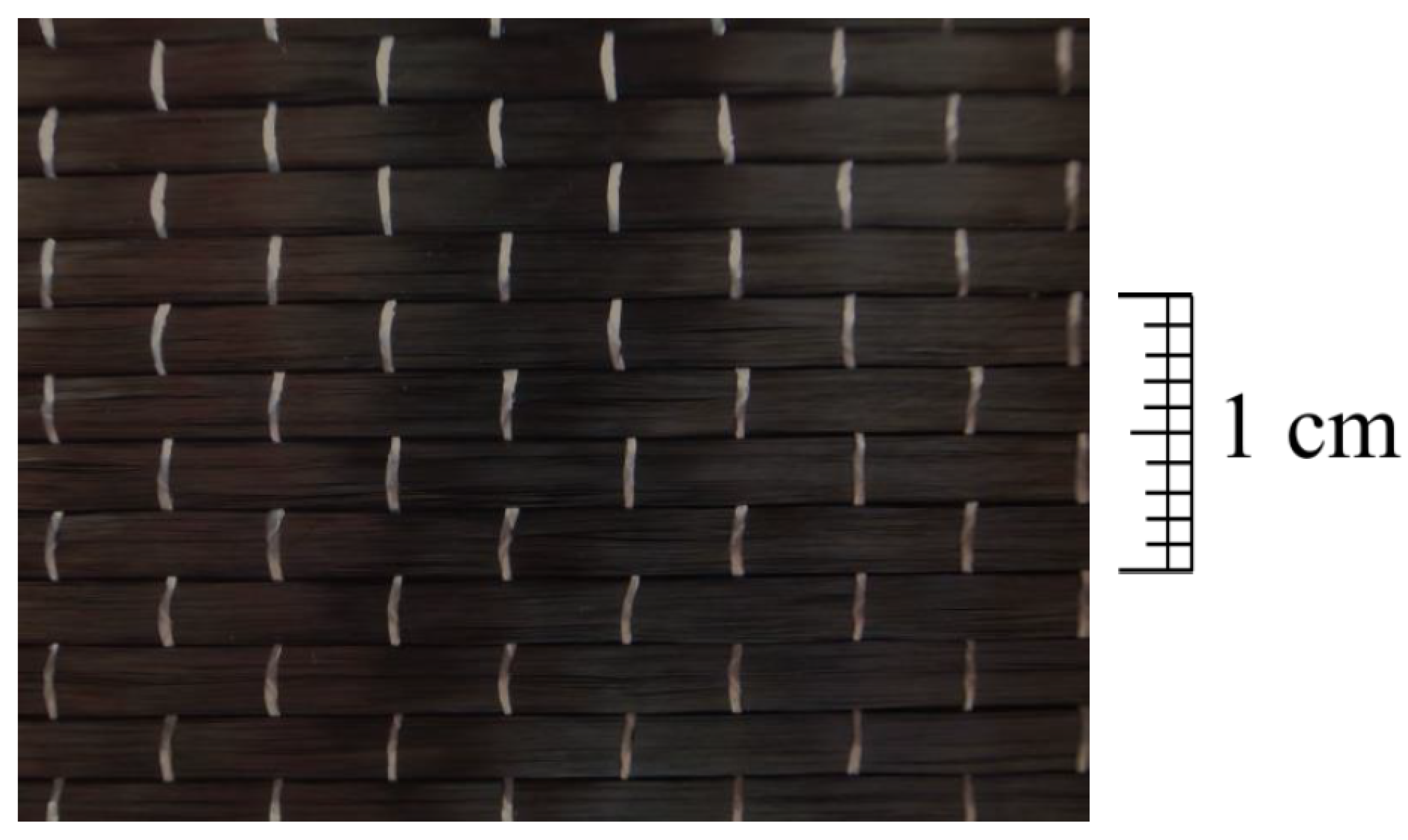
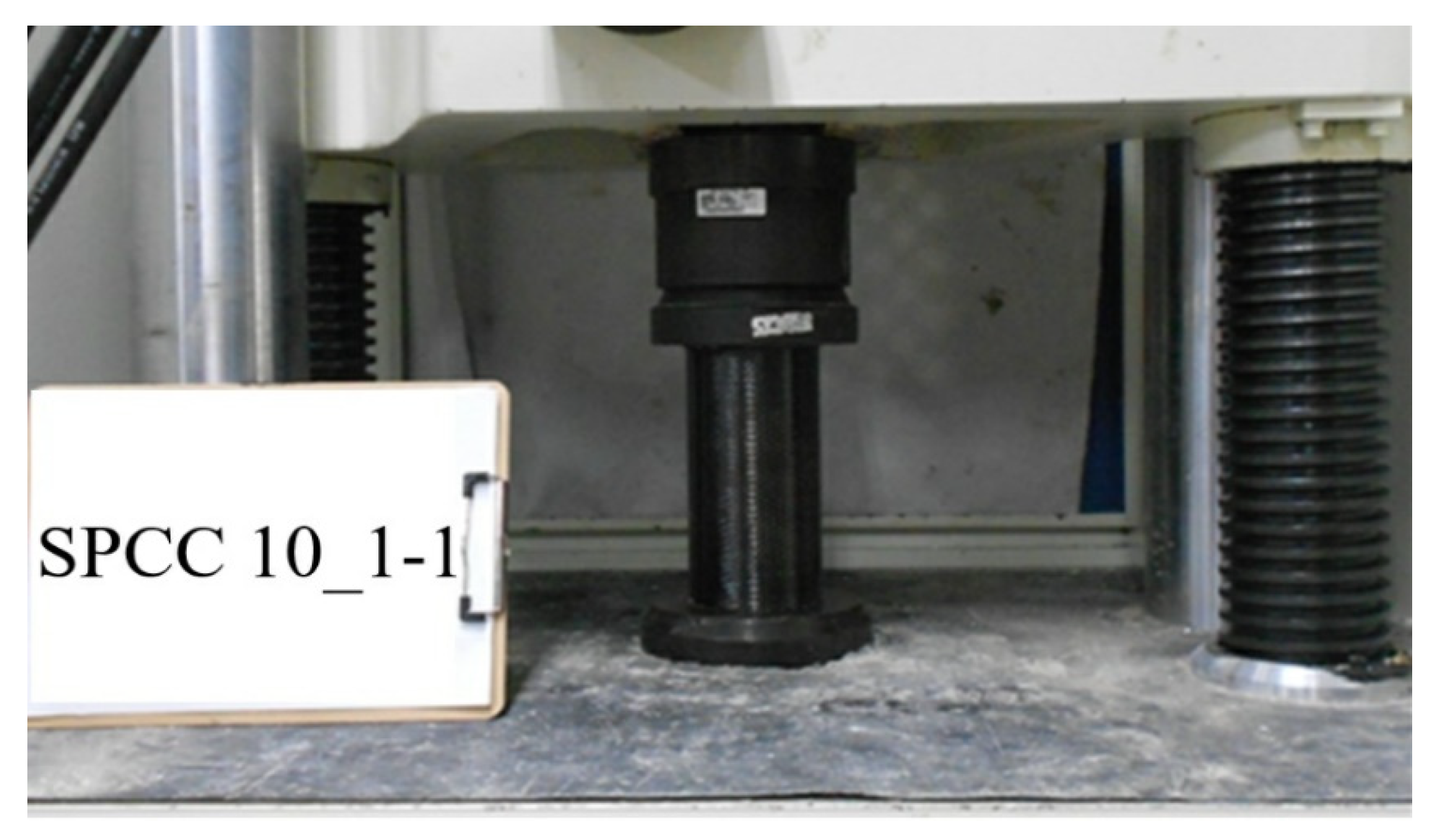
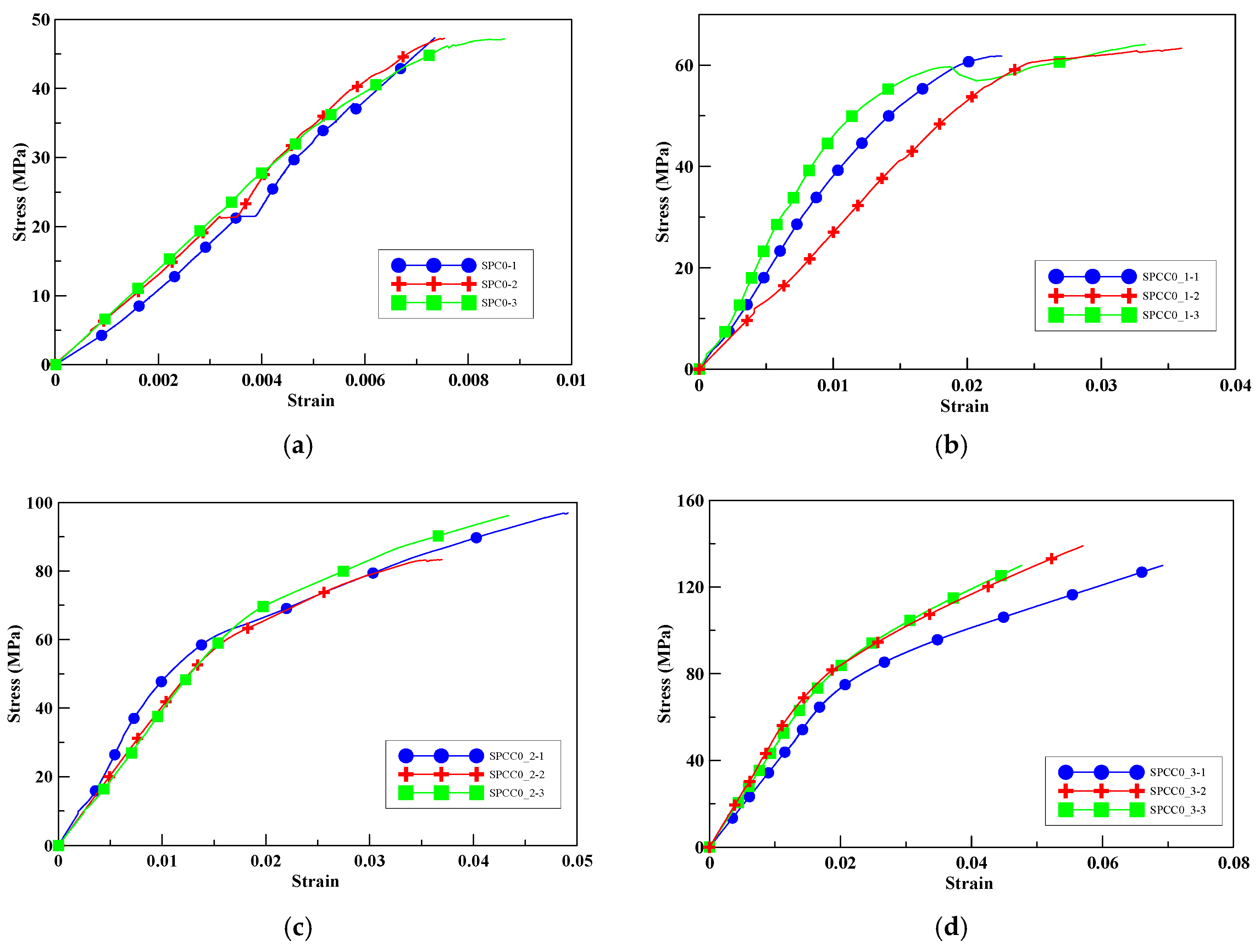
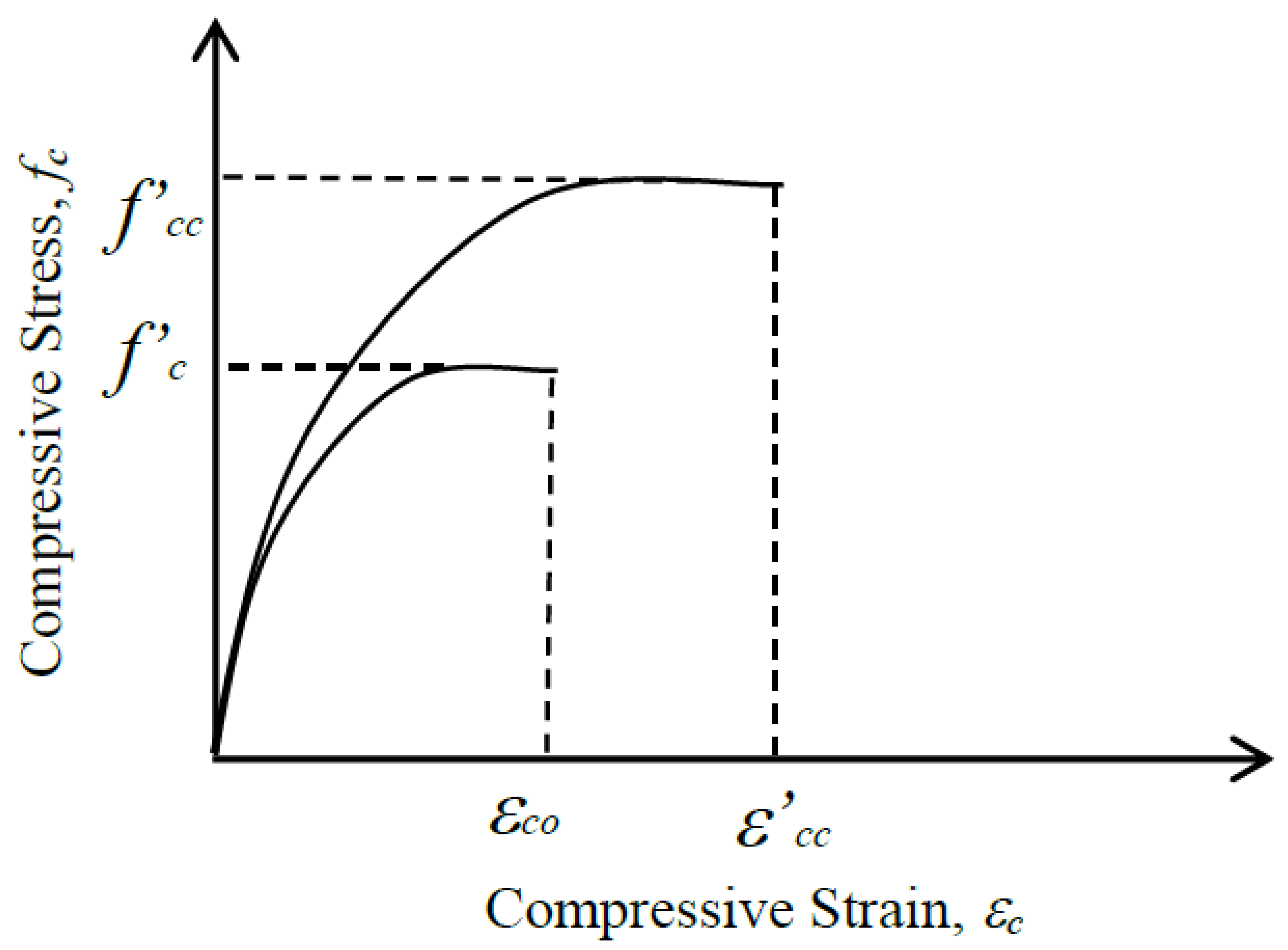
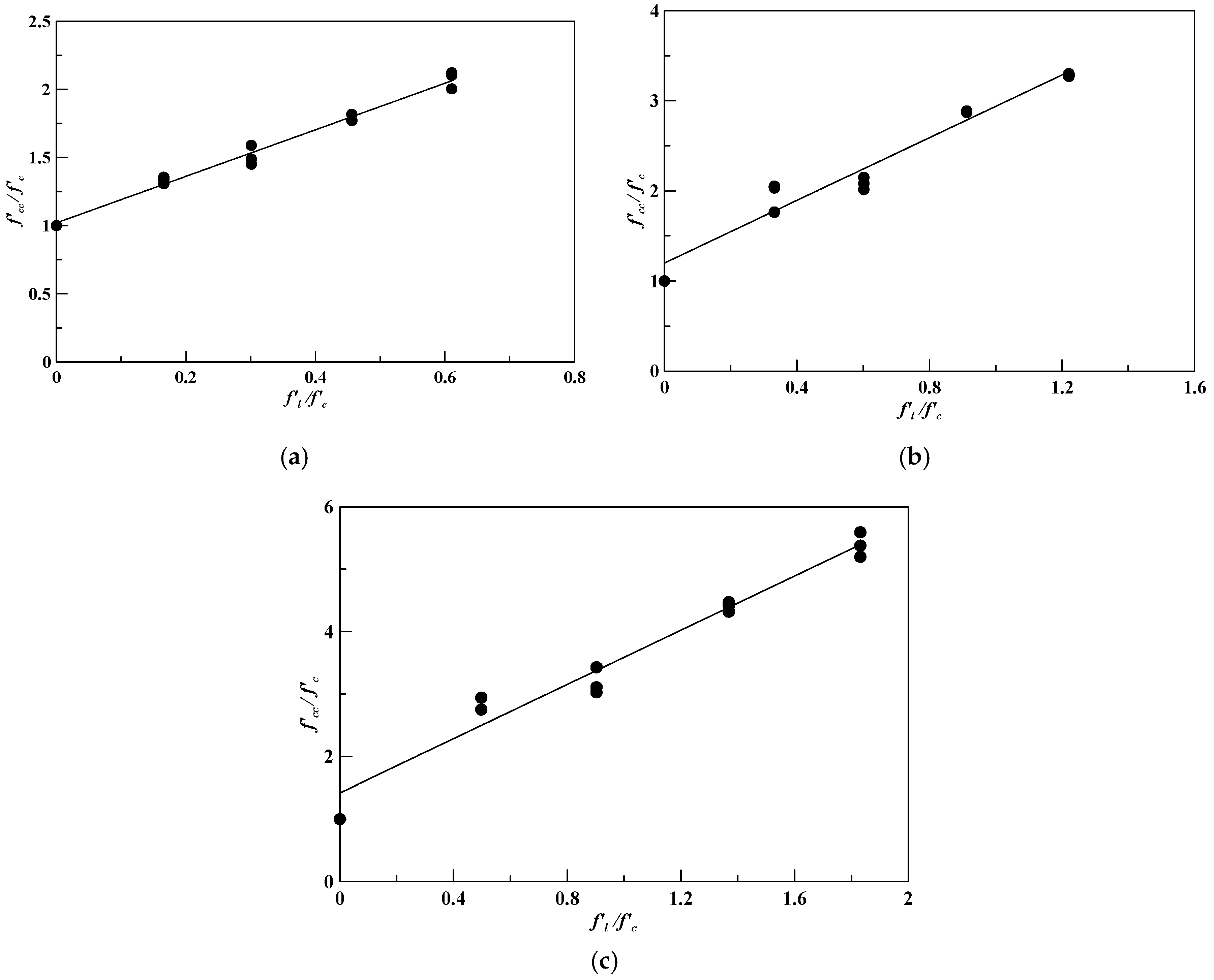
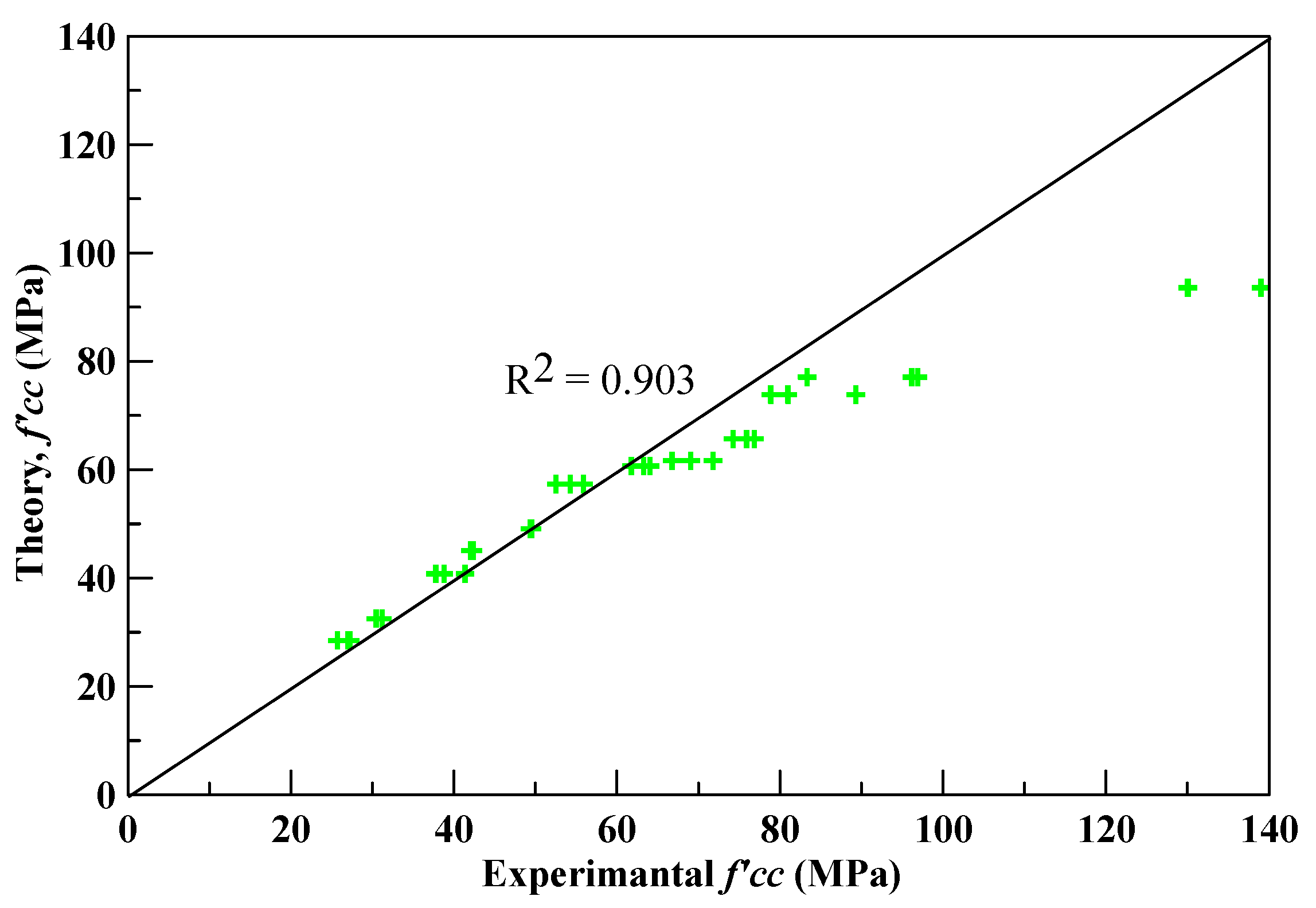
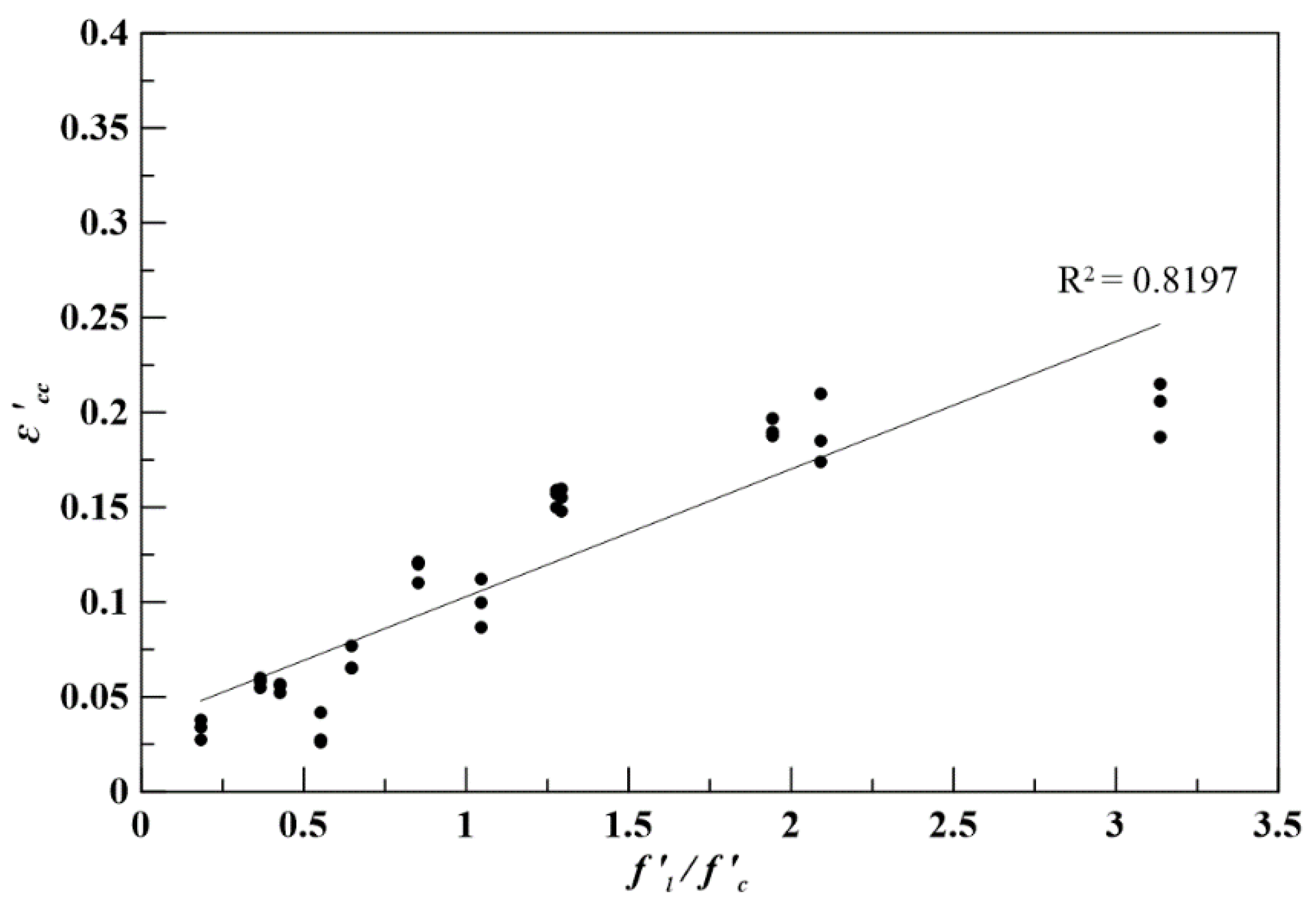
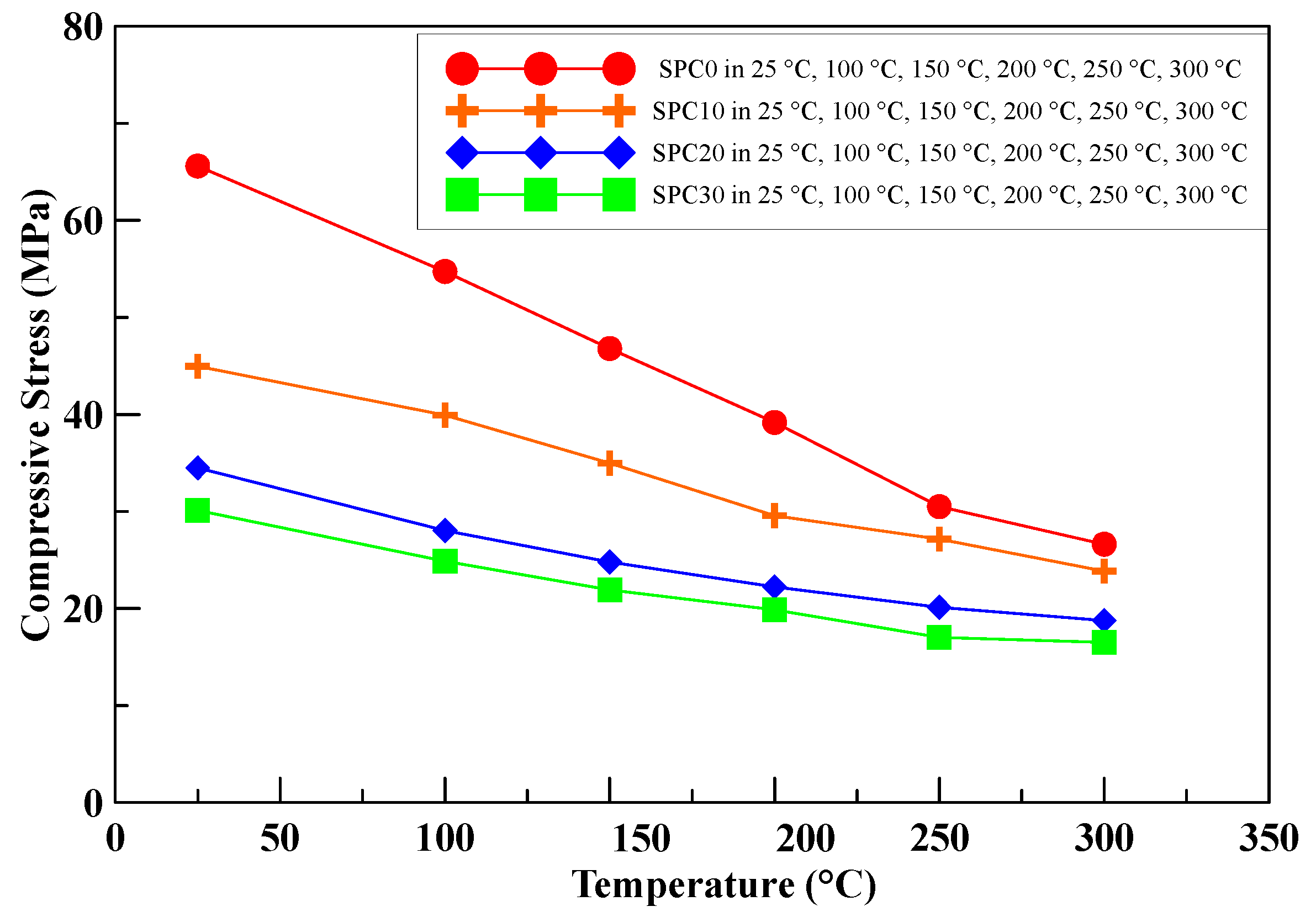
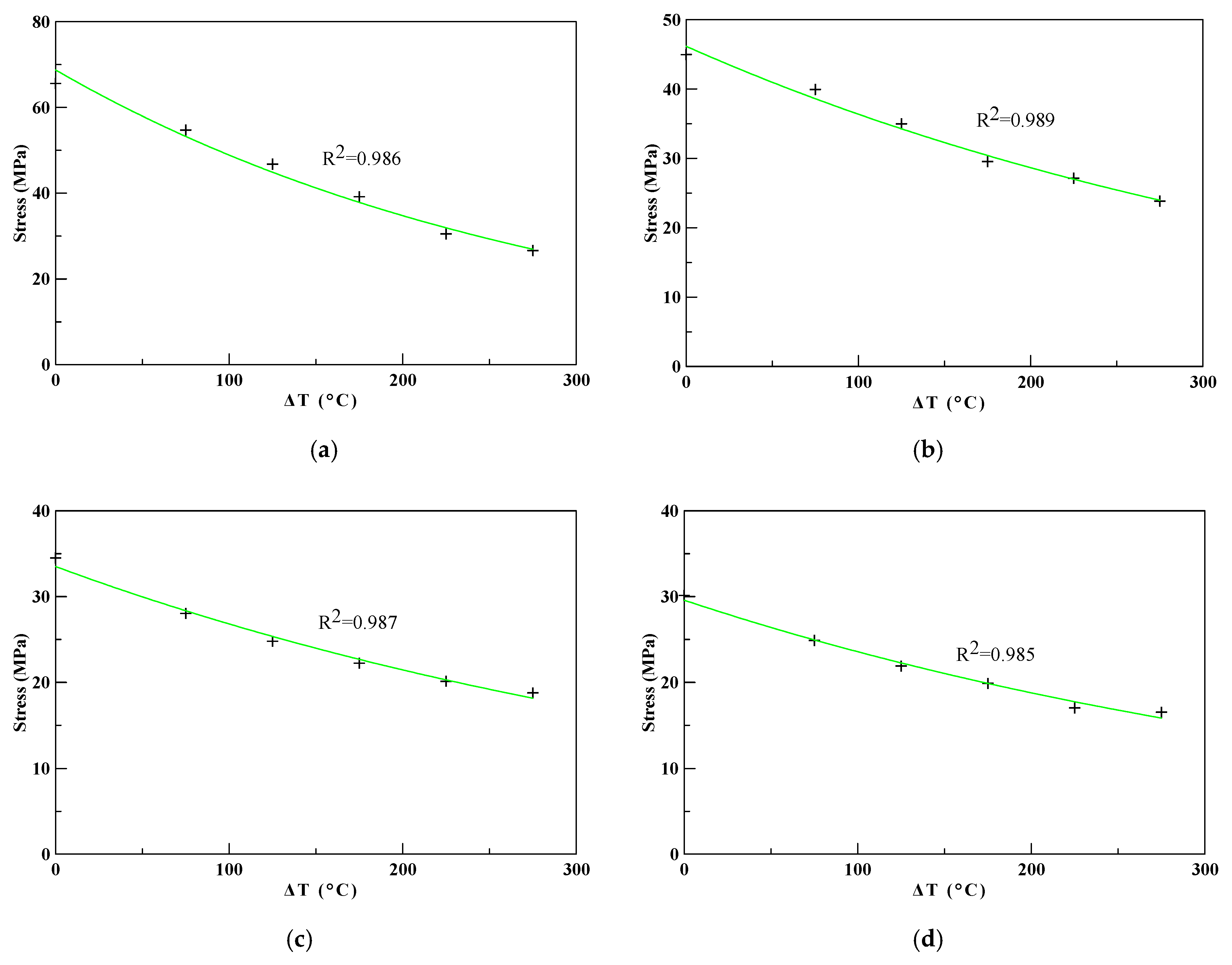
| Composition | Percentages (%) |
|---|---|
| CaO | 68.4 |
| SiO2 | 11.9 |
| Al2O3 | 9.20 |
| SO2 | 5.10 |
| Fe2O3 | 2.90 |
| K2O | 1.80 |
| TiO2 | 0.70 |
| P2O5 | 0.50 |
| Sieve Number | Weight Retained (g) | Percent Retained | Percent Coarser Than |
|---|---|---|---|
| #4 | 0 | 0 | 0 |
| #8 | 0 | 0 | 0 |
| #16 | 106 | 0.53 | 53.27 |
| #30 | 31 | 0.16 | 68.84 |
| #50 | 26 | 0.13 | 81.91 |
| #100 | 22 | 0.11 | 92.96 |
| Pan | 2 | 0.01 | 100.00 |
| Fineness modulus (F.M.) = 2.97 | |||
| Uni-directional Carbon Fiber Sheet | Specification | |
| Young’s modulus | 250 (GPa) | |
| Tensile strength | 4.9 (GPa) | |
| Thickness | 0.16 (mm/layer) | |
| Ultimate strain | 0.02 | |
| Epoxy Resin | Specification | |
| Viscosity (at 25 °C) | 1823 (cps) | |
| Young’s modulus | 3.5 (GPa) | |
| Tensile strength | 52.2 (MPa) | |
| Tensile adhesive strength | 10.5 (MPa) | |
| Specimen | Description (Test Method) | Dimension | Perlite Ratio in Weight (%) |
|---|---|---|---|
| SPC | HESC with perlite (ASTM C39/C39M-18) | Φ10 cm × 20 cm | 0; 10; 20; 30 |
| SPCC | HESC with perlite confined by CFRP (ASTM C39/C39M-18) | Φ10 cm × 20 cm | |
| SPTC | HESC with perlite under elevated temperature (ASTM C109/C M109-02) | 5 cm × 5 cm × 5 cm |
| Specimen | Perlite Ratio in Weight (%) | Perlite (g) | HESC (g) | Water (g) |
|---|---|---|---|---|
| SPC0 | 0 | 0 | 2000 | 700 |
| SPC10 | 10 | 200 | 1800 | 630 |
| SPC20 | 20 | 400 | 1600 | 560 |
| SPC30 | 30 | 600 | 1400 | 490 |
| Specimen | Shape | No. of CFRP Layer | No. of Cylindrical Specimen |
|---|---|---|---|
| SPC0 | Cylinder | Nil, 1, 2, 3 | 12 |
| SPCC10 | 12 | ||
| SPCC20 | 12 | ||
| SPCC30 | 12 |
| Specimen | Shape | Elevated Temperatures (°C) | No. of CFRP Cubic Specimen |
|---|---|---|---|
| SPTC0 | Cube | 25, 100, 150, 200, 250, 300 | 18 |
| SPTC10 | 18 | ||
| SPTC20 | 18 | ||
| STPC30 | 18 |
| Specimen | Perlite Ratio in Weight (%) | Average Compressive Strength (MPa) | Decrease Percentage (%) |
|---|---|---|---|
| SPC0 | 0 | 47.25 | - |
| SPC10 | 10 | 26.04 | 44.89 |
| SPC20 | 20 | 17.18 | 63.64 |
| SPC30 | 30 | 12.84 | 72.82 |
| Specimen | No. of CFRP Layers | Average Maximum Compressive Strength (MPa) | Increase Percentage (%) |
|---|---|---|---|
| SPCC0_1 | 1 | 63.05 | 33.4 |
| SPCC0_2 | 2 | 92.15 | 95.0 |
| SPCC0_3 | 3 | 133.04 | 181.6 |
| SPCC10_1 | 1 | 39.31 | 51.1 |
| SPCC10_2 | 2 | 54.25 | 108.3 |
| SPCC10_3 | 3 | 83.07 | 219.0 |
| SPCC20_1 | 1 | 30.69 | 78.4 |
| SPCC20_2 | 2 | 49.46 | 187.6 |
| SPCC20_3 | 3 | 75.68 | 340.0 |
| SPCC30_1 | 1 | 26.66 | 107.6 |
| SPCC30_2 | 2 | 42.19 | 228.6 |
| SPCC30_3 | 3 | 69.22 | 439.1 |
| Specimen with Perlite Percentage (%) | 1-Layer CFRP | 2-Layer CFRP | 3-Layer CFRP |
|---|---|---|---|
| Without perlite (SPCC0) |  | 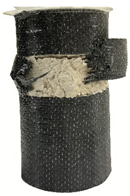 | 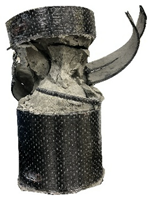 |
| 10% perlite (SPCC10) | 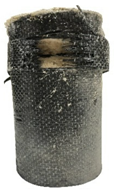 |  | 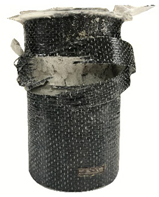 |
| 20% perlite (SPCC20) |  | 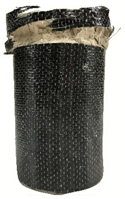 | 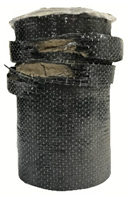 |
| 30% perlite (SPCC30) |  | 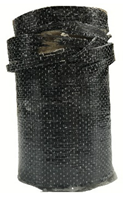 | 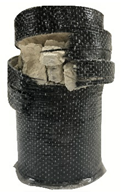 |
| Strain | 1-Layer CFRP SPCC0-1 | 2-Layer CFRP SPCC0-2 | 3-Layer CFRP SPCC0-3 |
|---|---|---|---|
| Measured Lateral Strain (%) | 0.898 | 1.092 | 1.223 |
| 0.975 | 1.076 | 1.173 | |
| 1.186 | 1.125 | 1.159 | |
| Average Lateral Strain (%) | 1.020 | 1.098 | 1.185 |
| Perlite Ratio in Weight | |||||
|---|---|---|---|---|---|
| No. of CFRP Layers | 0% | 10% | 20% | 30% | |
| Value | 1 | 6.03 | 3.32 | 2.19 | 1.64 |
| 2 | 3.01 | 1.66 | 1.10 | 0.82 | |
| 3 | 2.01 | 1.11 | 0.73 | 0.55 | |
| Specimen | Number of CFRP Layers | Average Experimental Maximum Strength (MPa) | Analytical Maximum Strength (MPa) | Absolute Error (%) |
|---|---|---|---|---|
| SPCC10_1 | 1 | 39.31 | 40.80 | 3.79 |
| SPCC20_1 | 1 | 30.69 | 32.54 | 6.03 |
| SPCC30_1 | 1 | 26.66 | 28.50 | 6.90 |
| SPCC10_2 | 2 | 54.25 | 57.33 | 5.68 |
| SPCC20_2 | 2 | 49.46 | 49.10 | 0.73 |
| SPCC30_2 | 2 | 42.19 | 45.08 | 6.85 |
| SPCC10_3 | 3 | 83.07 | 73.90 | 11.04 |
| SPCC20_3 | 3 | 75.68 | 65.68 | 13.21 |
| SPCC30_3 | 3 | 69.22 | 61.66 | 10.92 |
| - | ΔT (°C) | Perlite Ratio in Weight (%) | |||
|---|---|---|---|---|---|
| - | 0 | 10 | 20 | 30 | |
| Absolute Error (%) | 0 | 0 | 0 | 0 | |
| 9.10 | 5.84 | 4.08 | 2.02 | ||
| 6.51 | 7.51 | 1.64 | 10.01 | ||
| 3.96 | 4.85 | 3.78 | 11.72 | ||
| 8.39 | 4.57 | 5.40 | 3.56 | ||
| 0.99 | 1.64 | 5.34 | 5.59 | ||
| Average Absolute Error (%) | - | 5.12 | 3.13 | 3.49 | 2.63 |
| Correlation Coefficient (R2) | - | 0.95 | 0.98 | 0.98 | 0.98 |
Publisher’s Note: MDPI stays neutral with regard to jurisdictional claims in published maps and institutional affiliations. |
© 2020 by the authors. Licensee MDPI, Basel, Switzerland. This article is an open access article distributed under the terms and conditions of the Creative Commons Attribution (CC BY) license (http://creativecommons.org/licenses/by/4.0/).
Share and Cite
Li, Y.-F.; Sio, W.-K.; Yang, T.-H.; Tsai, Y.-K. A Constitutive Model of High-Early-Strength Cement with Perlite Powder as a Thermal-Insulating Material Confined by Caron Fiber Reinforced Plastics at Elevated Temperatures. Polymers 2020, 12, 2369. https://doi.org/10.3390/polym12102369
Li Y-F, Sio W-K, Yang T-H, Tsai Y-K. A Constitutive Model of High-Early-Strength Cement with Perlite Powder as a Thermal-Insulating Material Confined by Caron Fiber Reinforced Plastics at Elevated Temperatures. Polymers. 2020; 12(10):2369. https://doi.org/10.3390/polym12102369
Chicago/Turabian StyleLi, Yeou-Fong, Wai-Keong Sio, Tzu-Hsien Yang, and Ying-Kuan Tsai. 2020. "A Constitutive Model of High-Early-Strength Cement with Perlite Powder as a Thermal-Insulating Material Confined by Caron Fiber Reinforced Plastics at Elevated Temperatures" Polymers 12, no. 10: 2369. https://doi.org/10.3390/polym12102369





